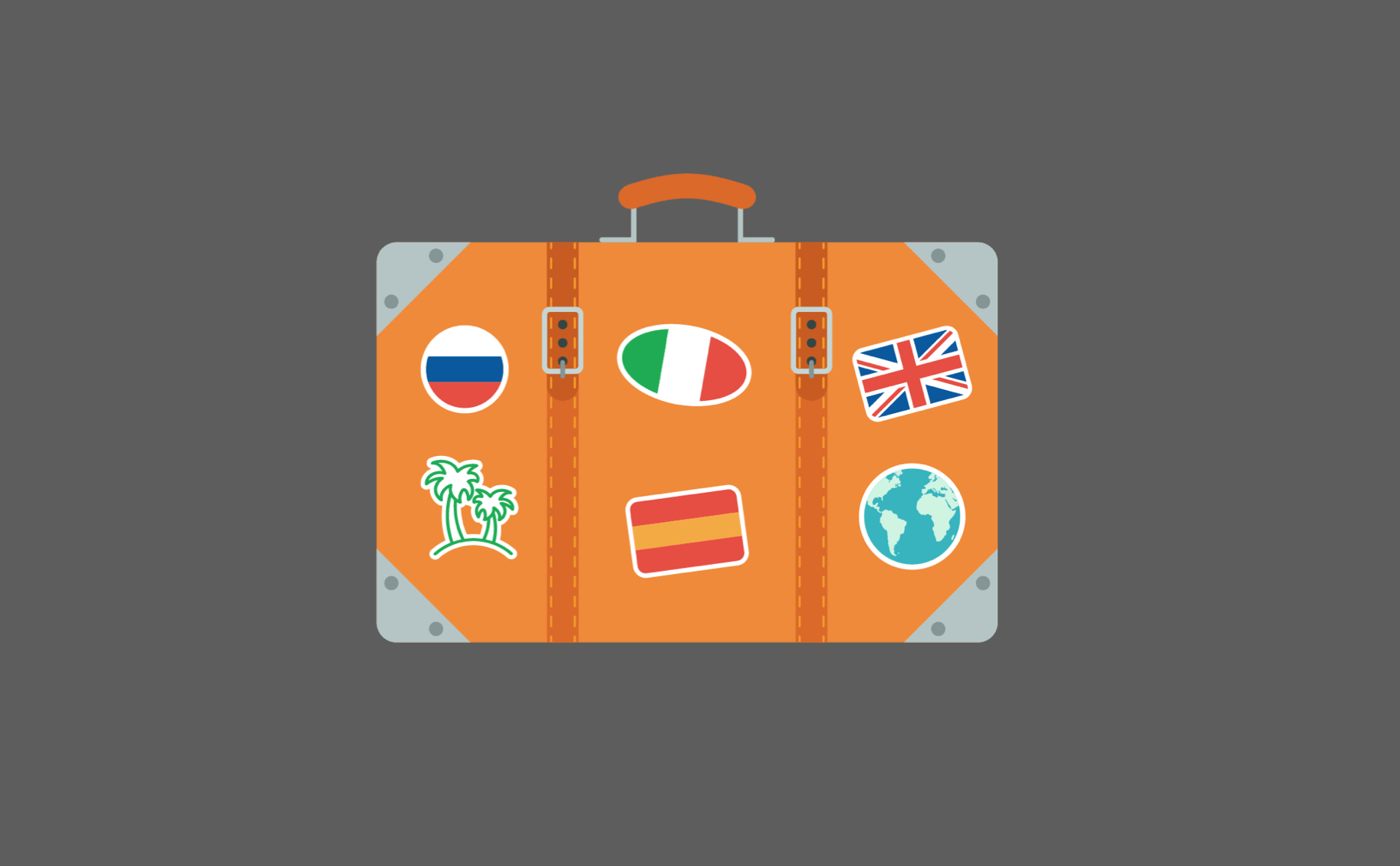5 tips for localising your e-commerce site

We're now living in a society with 4.388 billion internet users across the world - a penetration rate of 57% of the world's population. In this setting it's clear that for brands, having an online presence is no longer a choice. If your company doesn't have an internet presence, it doesn't exist. E-commerce has managed to break down geographical boundaries and give brands the opportunity to multiply their target audience and aim for exponential sales growth.
How do you localise your e-commerce site?
The best way to make an impact on your overseas target audience is to localise your online shop... Here are our 5 tips for localising your e-commerce site!
Analyse your audience
Your e-commerce site localisation should be a response to a strategic decision, and there's little value in adapting your online shop to countries that won't currently contribute anything to your business. That's why it's vital to have access to information on what traffic your website is generating, and segment it according to the countries that are generating the most in comparison with your total foreign visitors.
It's fair to say that sometimes, filtering this data by territory isn't a true reflection of reality - as well as knowing where our visitors come from, you need to take into account which language their browser is configured to.
Lastly, we need to check which demographic niche is giving you the most conversions on your e-commerce site. This will help figure out which languages you need to focus on as part of your website localisation strategy. You also need to check whether there's a gap between traffic from foreign visitors in a specific language and the number of orders completed by this same group - focusing your localisation efforts on that group and optimising your conversion rates could be an opportunity.
Open up your payment options
Once you're clear on where your traffic's coming from, which is the predominant browser language, which foreign demographic sector is giving you the most conversions, and which is leaving abandoned shopping baskets behind, you need to adapt your payment methods to make conversions easier for all the foreign visitors you think are most strategically important.
First, you need to consider how a lot of customers who visit your e-commerce site will abandon their shopping basket if the price of a product isn't shown in their local currency. So once you've established your target, make sure you've got prices available in all the relevant currencies.
Similarly, you need to think about foreign visitors' preferences in terms of payment methods, and this way get rid of any potential barriers between the customer and the conversion.
Only work with professional translators
When an overseas customer visits an e-commerce site, there's no worse first impression than a badly translated website. That's why we recommend you steer clear of machine translations for websites that offer e-commerce services - after all, according to a CommonSenseAdvisory report 75% of online shoppers prefer to find content in online shops in their native language. A badly translated website generates mistrust in potential customers, and it's very likely that they won't end up following through with a purchase as a result.
Using professional translators to adapt your brand's content will be the key to making a positive impact on your new audience in foreign markets with different languages, beliefs, and cultures. The best thing localisation can do for you is make sure your new foreign target audience identifies with your products, services, and most importantly, your brand.
Offer content adapted to your new audience
It's important to carry out a marketing study of the market you want to go for - before you create any content. And also analyse the competition you'll be up against. The key is to offer content that's relevant to your new audience, and craft striking messages that will have an impact on your expected target audience.
It's also essential to actively engage with foreign customers who are already buying on your e-commerce site, given that 70% of e-commerce customers read comments and reviews from other users before they buy. This makes them feel more comfortable and secure when it comes to buying from a foreign online shop.
Reading other users' opinions in their own language helps increase foreign visitors' conversion rates, so it's definitely something you need to consider when you opt for an online shop localisation strategy.
Localise your SEO
There's no point in having a perfectly localised e-commerce site if your foreign audience can't find you, which is why you need to think seriously about your international SEO strategy. It's a common pitfall to think that having professionally translated content in the languages required is enough. But no matter how well translated these texts are, it could be that the keywords you're using in the source language don't work in the same way as in the target language. When it comes to translating the keywords for your positioning, you need to look into which ones are used in the market you're looking at. A professional translator specialising in marketing will know how to localise your keywords so your e-commerce site is positioned correctly.
There might be a lot of other things to think about when you localise your e-commerce site, but if you apply these 5 tips you'll stand out from the competition - and you'll have an online shop that's ready to win over your foreign customers Leave it to us to localise your website and content. We work with native professional translators who can adapt your content, campaigns, and products, so that your brand will triumph in new markets. Are you ready to take on the internationalisation challenge?




